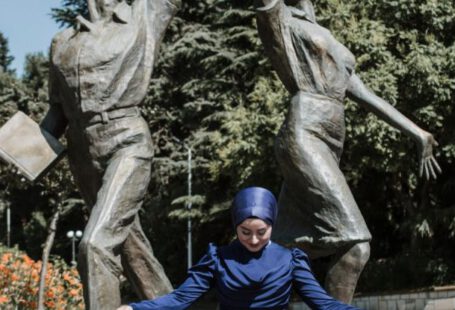Art movements have long been regarded as a mirror reflecting the societal changes that occur during specific periods of time. From the Renaissance to modern-day contemporary art, each movement has been shaped by the cultural, political, and social landscapes of its era. Through the evolution of artistic styles, techniques, and subject matters, artists have responded to and often challenged the prevailing norms and values of society. By examining how art movements have mirrored societal changes, we can gain a deeper understanding of the interconnectedness between art and the world in which it is created.
**The Role of Art Movements**
Art movements serve as visual representations of the zeitgeist, capturing the spirit of their time through the artistic expressions of their creators. These movements are not isolated occurrences but are deeply intertwined with the broader context of society. Artists are not passive observers; they actively engage with the world around them, using their art as a means of communication, critique, and reflection. As a result, art movements often emerge in response to societal shifts, serving as both a reflection of current events and a catalyst for change.
**Renaissance: A Rebirth of Humanism**
The Renaissance, which emerged in Europe during the 14th to 17th centuries, marked a significant shift in artistic expression. Characterized by a revival of classical learning and a focus on humanism, Renaissance art reflected the changing attitudes towards the individual and the natural world. Artists such as Leonardo da Vinci and Michelangelo embraced new techniques and perspectives, breaking away from the religious dogma of the Middle Ages. The rise of humanism during the Renaissance emphasized the importance of human potential, leading to a renewed interest in anatomy, perspective, and the natural world in art.
**Romanticism: Embracing Emotion and Nature**
In the late 18th and early 19th centuries, Romanticism emerged as a reaction against the rationalism of the Enlightenment. Romantic artists sought to evoke emotion, imagination, and a connection to nature in their work. Painters like J.M.W. Turner and poets like William Wordsworth embraced the sublime and the untamed, challenging the societal emphasis on reason and order. By celebrating the individual’s emotions and experiences, Romanticism reflected a growing dissatisfaction with industrialization and urbanization, as well as a longing for a more authentic and connected way of life.
**Modernism: Fragmentation and Experimentation**
The Modernist movement, which spanned the late 19th to mid-20th centuries, was characterized by a rejection of traditional forms and a focus on experimentation and innovation. Artists such as Pablo Picasso and Wassily Kandinsky pushed the boundaries of artistic expression, breaking with the conventions of representation and exploring new ways of seeing and understanding the world. Modernism reflected the tumultuous changes of the industrial age, including urbanization, technological advancements, and shifting social structures. By embracing fragmentation and abstraction, Modernist artists challenged the notion of a single, unified reality, reflecting the increasing complexity and diversity of modern life.
**Contemporary Art: Reflecting Globalization and Diversity**
Contemporary art, which encompasses the art produced from the mid-20th century to the present day, reflects the interconnectedness of a globalized world. Artists such as Ai Weiwei and Kara Walker address issues of identity, politics, and social justice in their work, engaging with the complexities of a rapidly changing world. Contemporary art embraces diversity in both form and content, reflecting the multiplicity of voices and experiences in today’s society. Through mediums such as installation, performance, and digital art, contemporary artists challenge traditional boundaries and hierarchies, inviting viewers to question their assumptions and perspectives.
**In Conclusion: Art as a Reflection of Society**
Art movements provide a window into the cultural, political, and social landscapes of their time, offering insights into the values, beliefs, and challenges of society. By examining how art movements have mirrored societal changes, we can better understand the evolving relationship between art and society. As artists continue to engage with and respond to the world around them, art movements will continue to serve as a dynamic reflection of the ever-changing nature of human experience.





